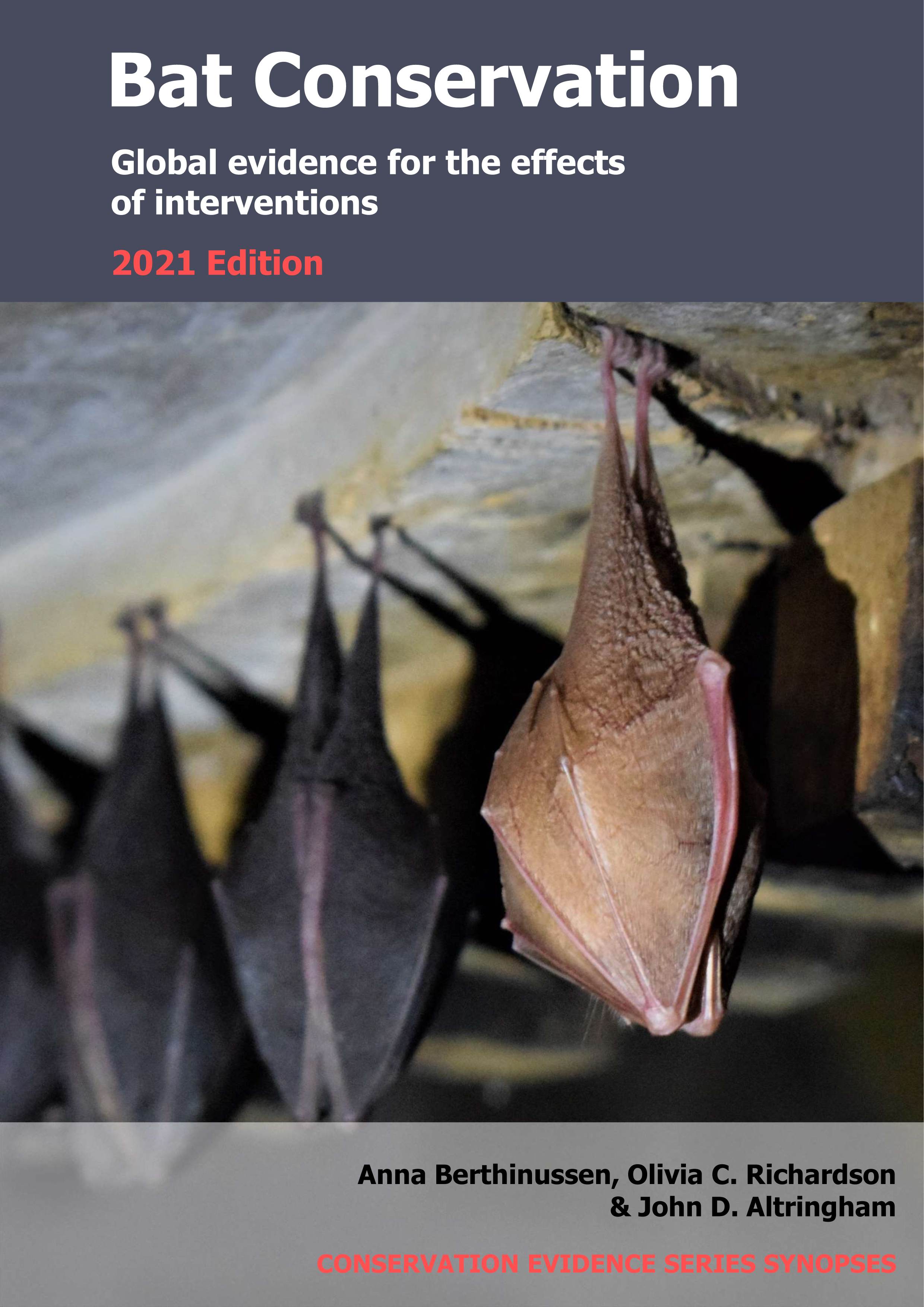Treat bats for infection with white-nose syndrome
-
Overall effectiveness category Unknown effectiveness (limited evidence)
-
Number of studies: 2
View assessment score
Hide assessment score
How is the evidence assessed?
-
Effectiveness
50% -
Certainty
35% -
Harms
15%
Study locations
Supporting evidence from individual studies
A randomized, controlled study in 2013–2015 in a laboratory in Manitoba, Canada (Cheng et al 2017) found that treating bats with a probiotic bacterium Pseudomonas fluorescens at the time of, but not 21 days prior, to infection with white-nose syndrome reduced symptoms and increased survival. For bats that received the probiotic treatment at the time of white-nose syndrome infection, four of five disease symptoms were lower than for untreated, infected control bats (data reported as statistical model results). For bats that received the treatment 21 days prior to infection, all five symptoms were greater than for untreated, infected control bats. Bats that received the probiotic treatment at the time of infection also had higher survival rates (71% of bats survived after 185 days) than untreated, infected control bats (18% of bats survived). Survival rates between all other treatment groups did not differ significantly. Eighty-five little brown bats Myotis lucifugus were collected from a hibernaculum and equally divided into five treatment groups (probiotic treatment 21 days prior to white-nose syndrome infection, probiotic treatment at time of infection, probiotic treatment only, infection with white-nose syndrome only, no treatment). Bats were kept in nylon mesh cages and monitored for up to 185 days during hibernation.
Study and other actions testedA randomized, controlled study in 2015–2016 at a mine in Wisconsin, USA (Hoyt et al 2019) found that treating little brown bats Myotis lucifugus with a probiotic bacterium Pseudomonas fluorescens increased survival for free-flying bats but not caged bats. A greater proportion of free-flying bats treated with the probiotic bacterium survived over winter (six of 13 bats, 46%) than untreated bats (one of 12 bats, 8%). Survival was unknown for five other free-flying bats that lost their tags. Survival and severity of white-nose syndrome did not differ for treated and untreated bats kept in cages within the mine (both: four of 15 bats survived, 26%). In November 2015, sixty bats infected with white-nose syndrome were captured within the mine and randomly assigned to a treatment group (probiotic bacterium sprayed on the wings and tail; 29 bats) or untreated control group (31 bats). Fifteen treated and 15 untreated bats were placed in two separate metal cages (46 x 30 x 51 cm) mounted to the mine ceiling. The other 30 bats (16 treated, 14 untreated) were fitted with tags and released. Free-flying bats detected by a tag receiver at the mine entrance after 8 March 2016 were assumed to have survived over winter. Bats were removed from the cages in March 2016 and had one wing photographed under ultraviolet light to measure disease severity.
Study and other actions tested
Where has this evidence come from?
List of journals searched by synopsis
All the journals searched for all synopses
This Action forms part of the Action Synopsis:
Bat Conservation
Bat Conservation - Published 2021
Update 2020





)_2023.JPG)














